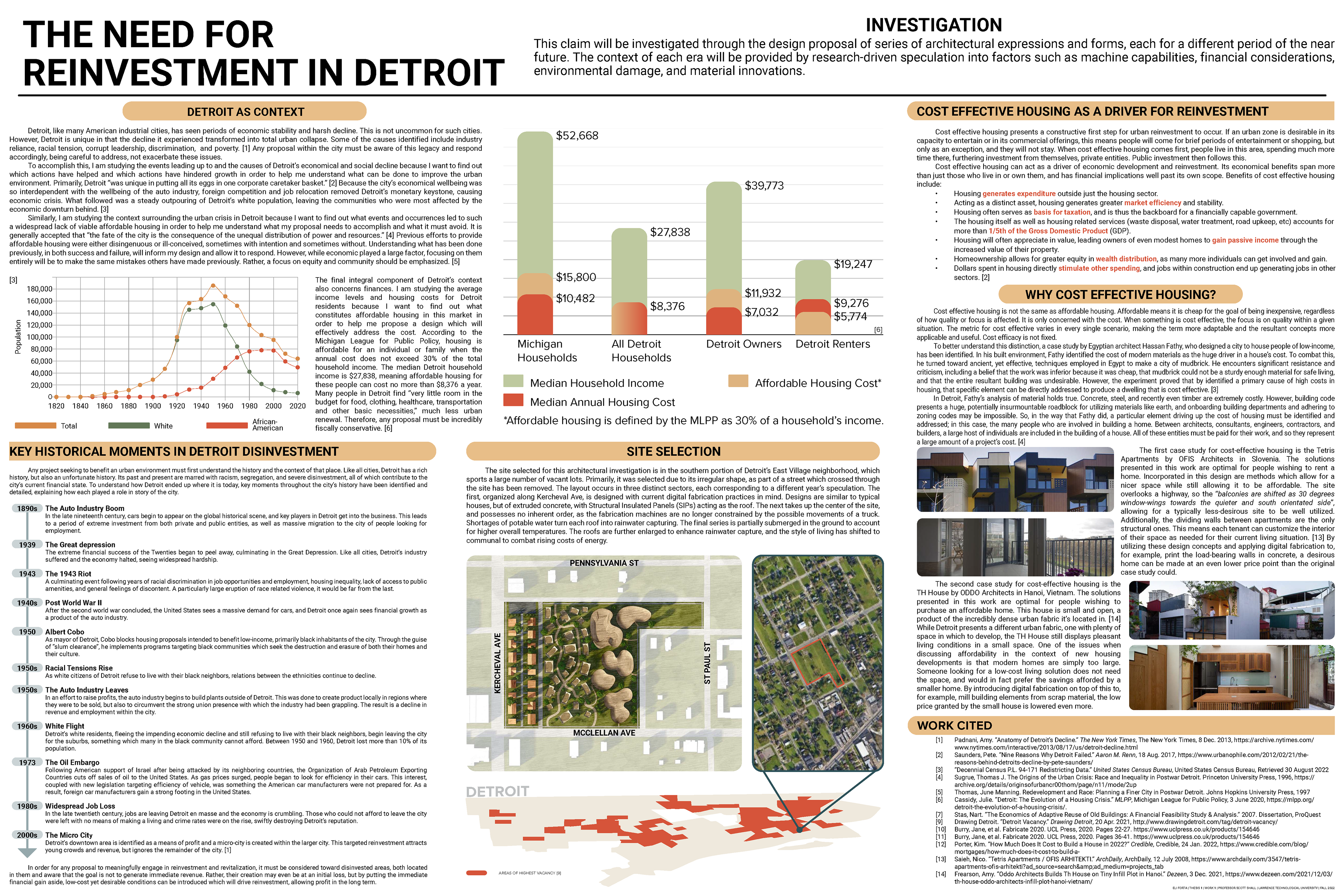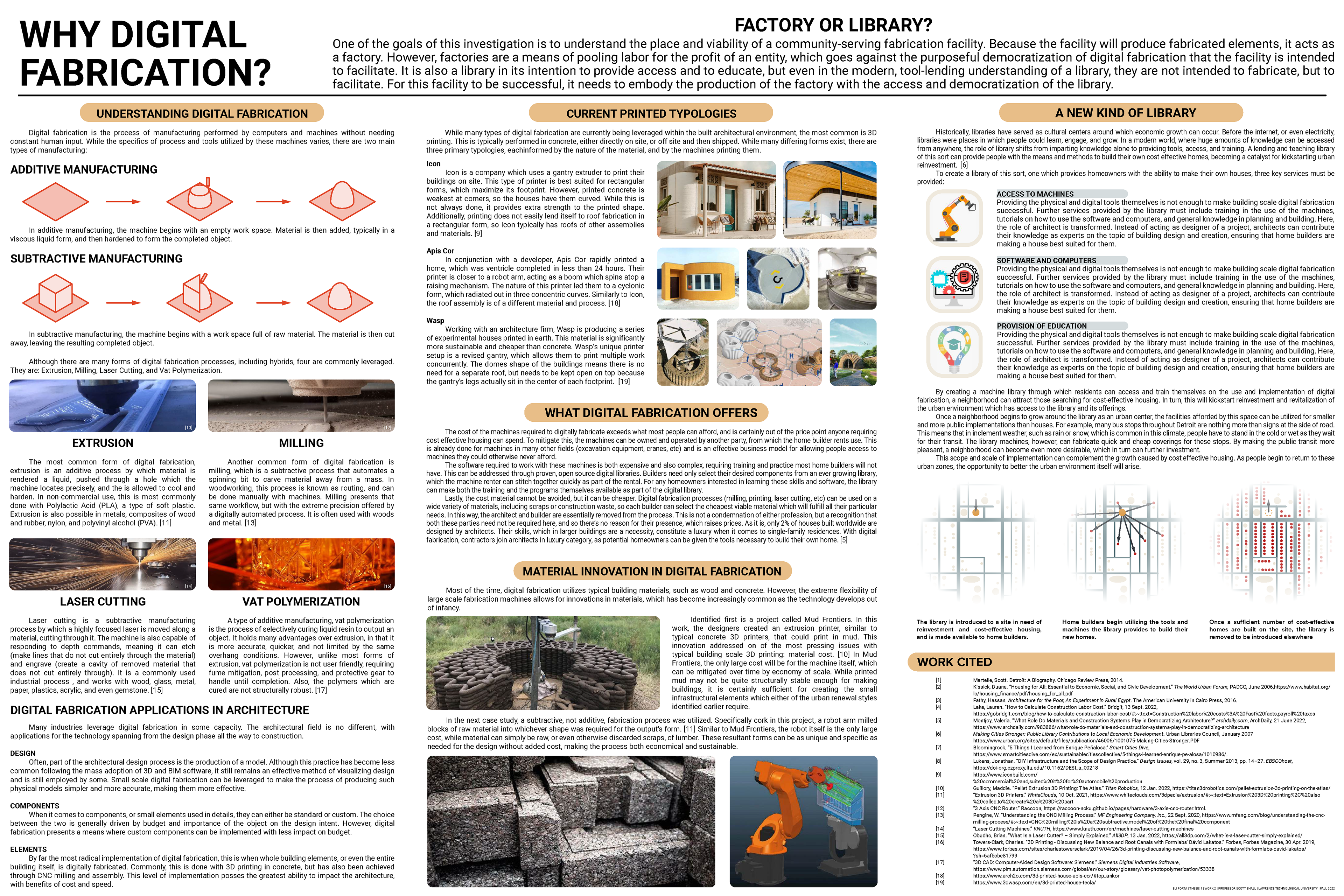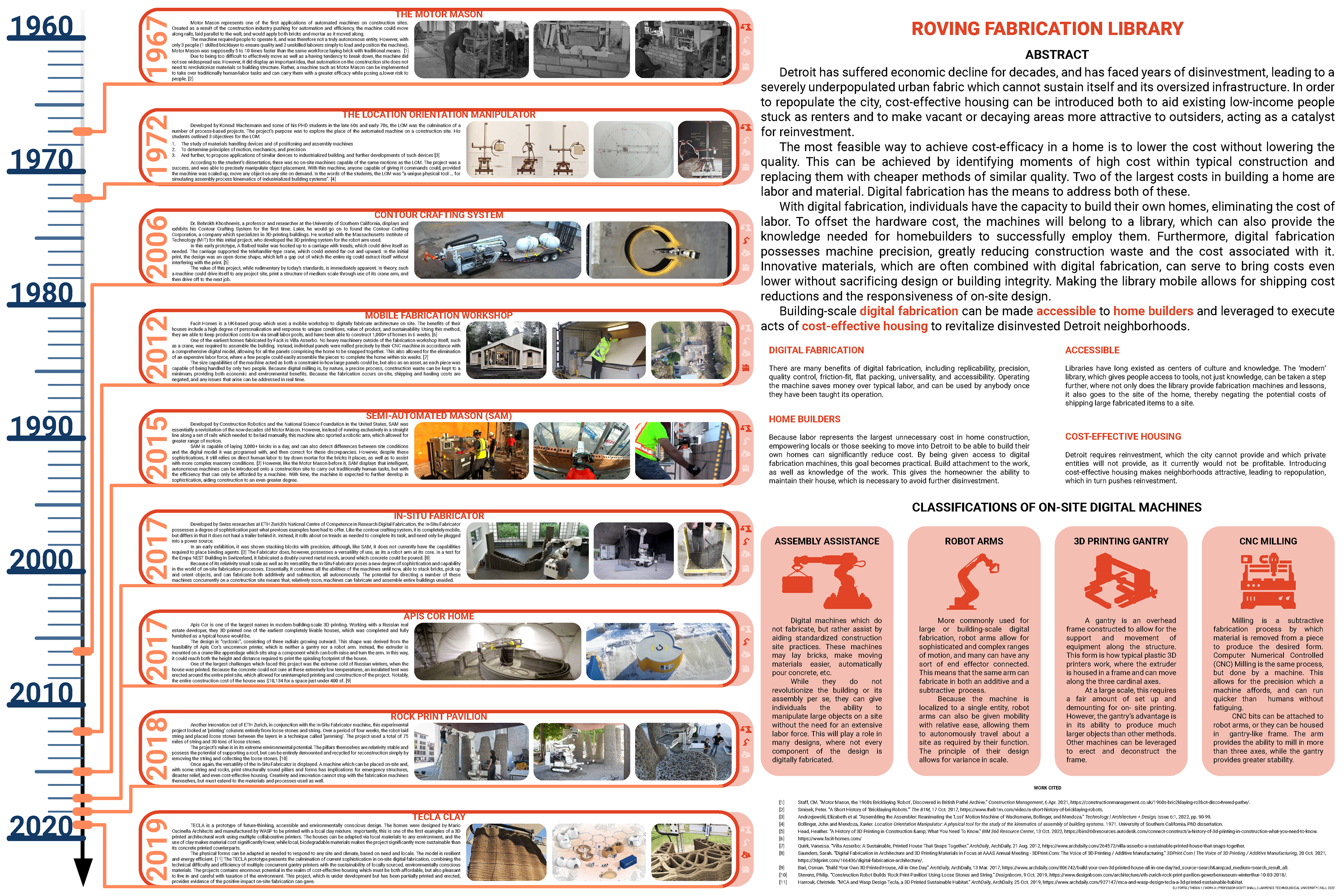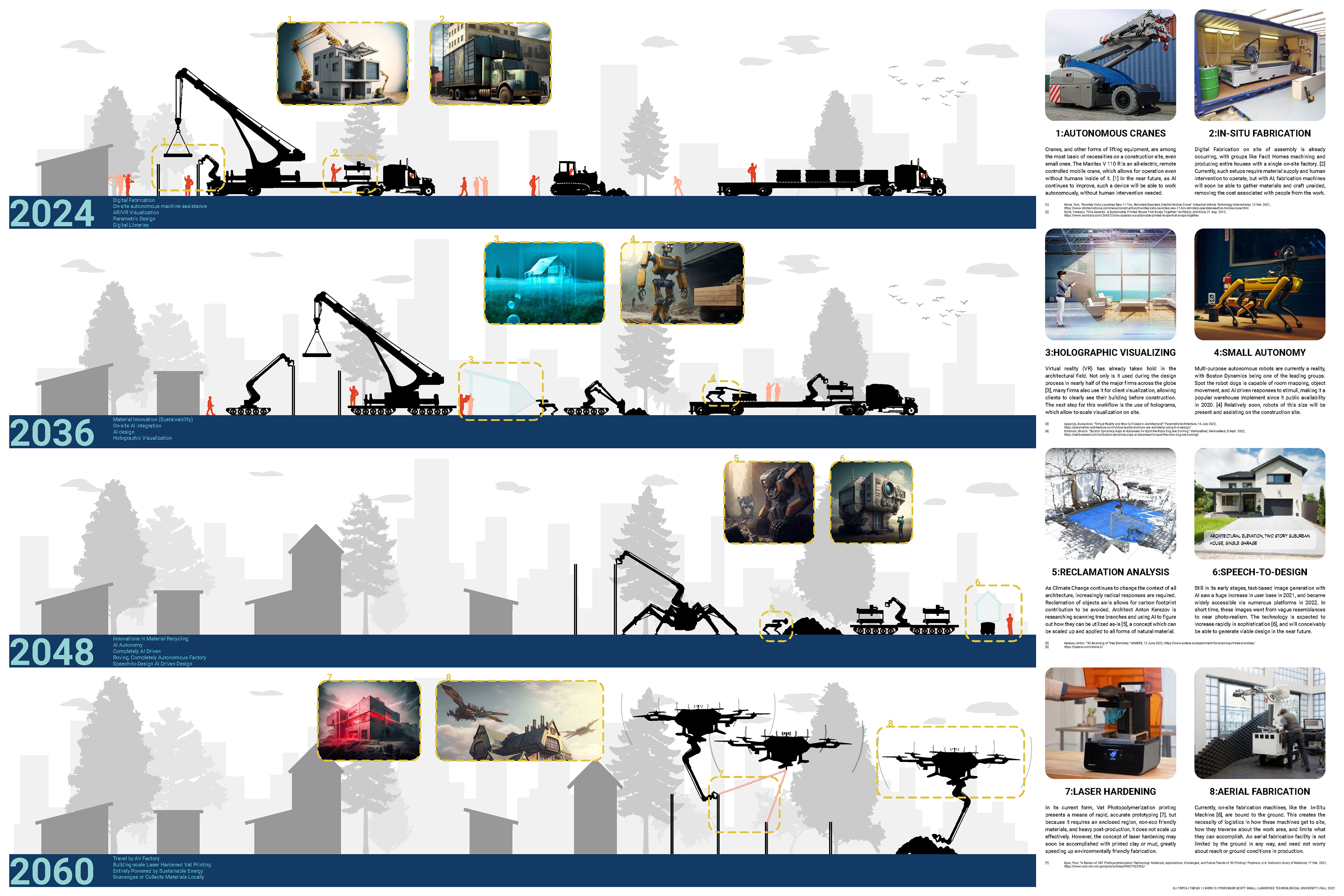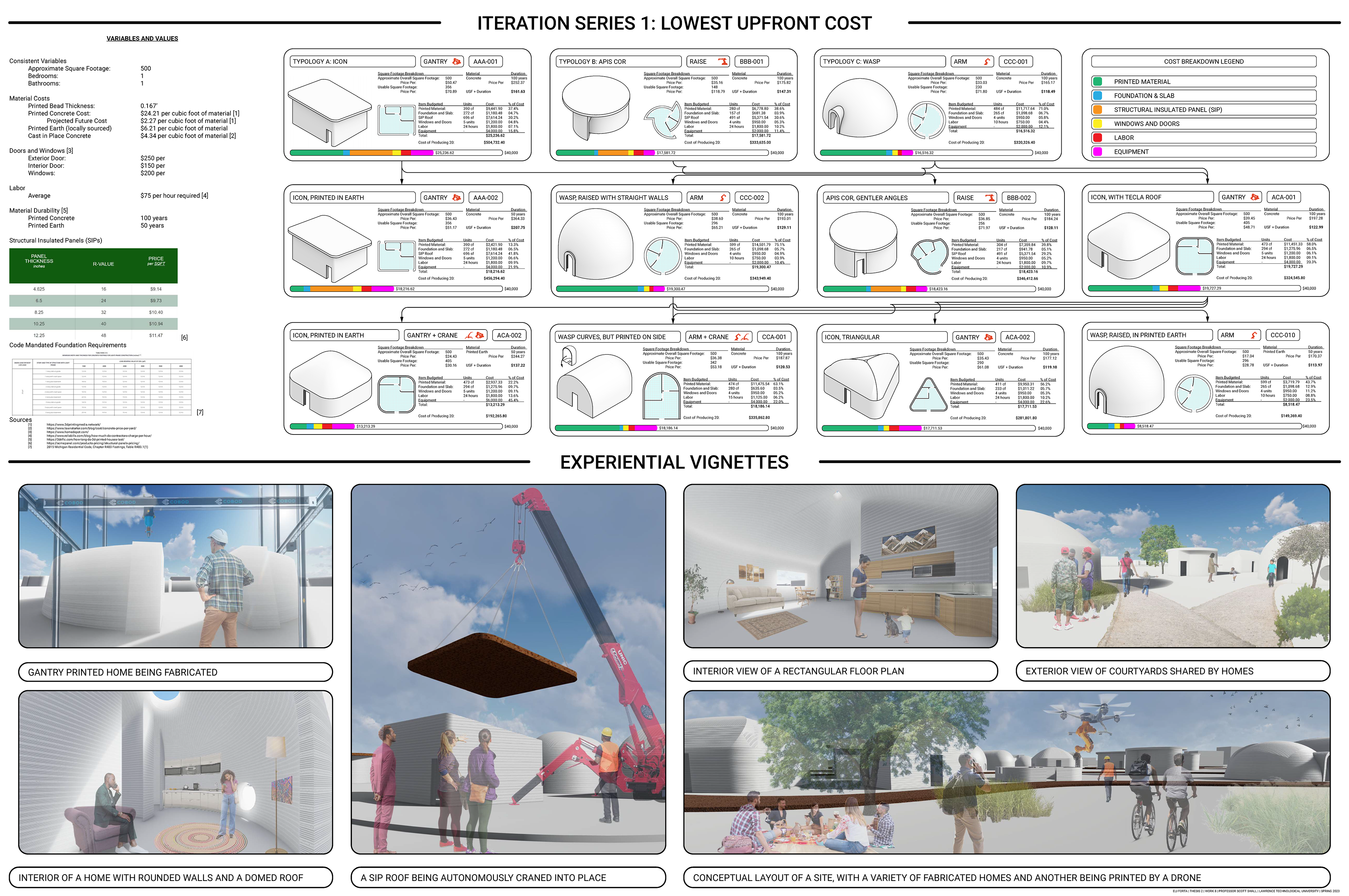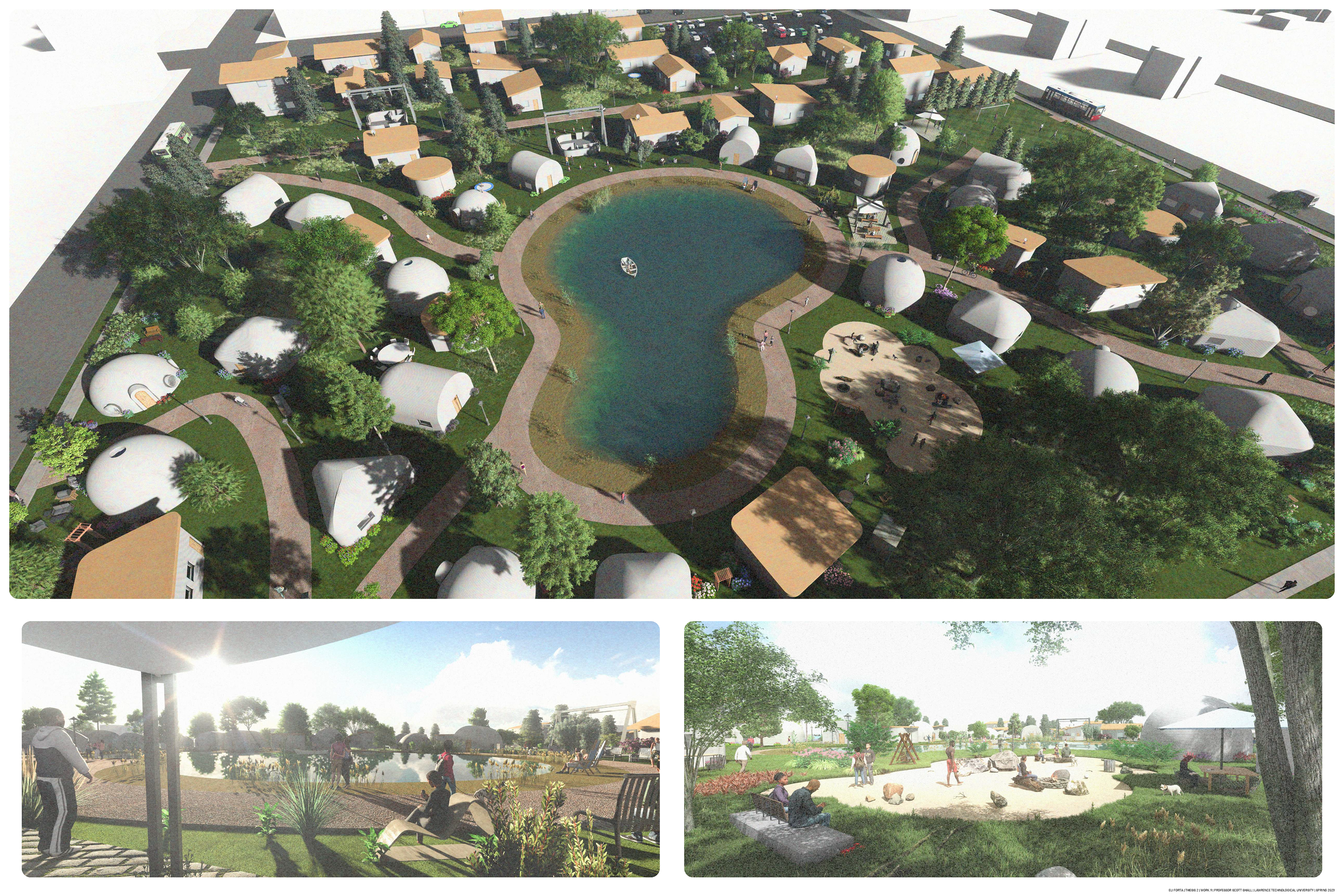Thesis research performed by Eli Forta in partial fulfillment of the Master of Architecture
Thesis Committee:
Scott Shall, Thesis Committee Chair
Anirban Adhya PhD, Committee Member
Eric Ward, Committee Member
ABSTRACT: Detroit, like many American cities, has faced years of disinvestment. This has led to a severely underpopulated urban fabric containing oversized infrastructure, which can no longer be supported through the ever-shrinking tax base. The disinvestment occurred for a number of reasons, including discriminatory policies, single industry economical reliance, and mass flight of residents, but the outcome was the same: Detroit could no longer sustain itself.
One often-recognized contributing factor to this issue is the cost of housing (Cassidy 2019). Solutions have been posed, including housing towers and the townhouse typology, but none were successful in alleviating the misalignment of housing costs and valuation. These previous attempts at providing housing within the remaining Detroit resident’s means were often well-intentioned and, accurately, they identified the cost associated with housing as an issue. However, they did not possess a means of radically decreasing costs, and so the only available option for affordability was making cheap homes, characterized by low-quality materials and construction, and poor living conditions. (Arnold 2018)
Emerging construction technologies, both physical onsite machines and Artificial Intelligence programs, can disrupt this state of affairs, offering the capacity to greatly reduce the costs associated with housing without compromising quality or design. These tools gain accuracy of output, become simpler to operate, and are more affordable with each iteration. Such technologies can be made accessible to home builders in Detroit to execute acts of cost-effective housing, which will revitalize disinvested neighborhoods, and which can also respond to the shifting context the environment poses.
To investigate this claim, a series of digitally fabricated home designs will be posed, focusing on the present and near future of onsite autonomous construction machines, including a detailed cost breakdown to understand to what degree such methods can effectively contribute to cost-effective housing production. These houses will then be compared to current affordable building processes and standards, primarily through the lenses of cost and quality in order to determine the quantifiable degree by which such technological leverage improves the making of cost-effective housing.
